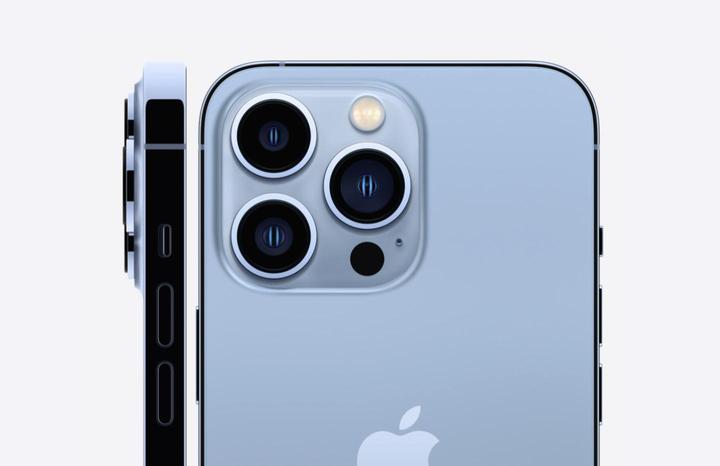One of the main changes brought by the new generation of iPhone is the arrival of a new chip. The Apple A15 Bionic is supposed to be more efficient and less energy-consuming than any other system on the market. Here's what we know about her.
At the same time as its new iPhones, Apple unveiled its latest A15 Bionic chip during its back-to-school conference on September 14, 2021. At the time of its presentation, Apple claimed that the chip was more powerful and more energy efficient than last year's model, while being "50% faster" than competing systems (including Qualcomm chips). But, as often, the interest of this announcement is hidden in the details.
There are two A15 chips
The iPhone 13 and 13 Pro may both have this new in-house chip on board, but the two mobiles are not quite equal. If we compare the two models on the Apple site, we see that the iPhone 13 Pro have a "new 5-core GPU" while the standard models have to make do with 4 cores on the graphics part.
The A15 chip therefore exists in two distinct versions, depending on whether you opt for an iPhone 13 or 13 Pro. This difference is potentially explained by the fact that the Pro model includes exclusive features, such as “ProRes” video recording (for image specialists), which require more power. This allows Apple to claim that the A15 of the Pro models is "the fastest smartphone chip", while that of the standard models is content to be "faster than the competition".
It's not the first time that the same chip arrives in two different configurations (it's even common on Android mobiles), and the explanation behind it is quite simple. Apple practices “chip binning”, a technique which consists in using processors which do not exactly meet the expected specifications, but which remain perfectly usable. Production lines are not infallible, so Apple reuses chips or a core is defective.

15 billion transistors
Now that this distinction is made, we will refer in the rest of this article to the A15 chip as a whole, as the differences between the two versions are in fact minimal.
The characteristics of the A15 Bionic chip
Source: Apple
On paper, Apple's new component doesn't look all that different from last year's model. The chip is still engraved in 5 nanometers and there are still 2 cores dedicated to performance and 4 cores dedicated to “high energy efficiency”. This architecture, after all fairly standard in the computer world, is called "big.LITTLE". It's nicknamed that because it offers powerful "big" cores for high-demanding tasks, as well as smaller, power-efficient "smaller" cores dedicated to more day-to-day activities.
It is therefore not on the raw technical sheet that the A15 is distinguished from the A14. When you look in more detail, however, the differences are visible. Apple's new chip contains 15 billion transistors compared to 11.8 on the A14. This should result in a slight gain in raw performance, but Apple does not communicate much on this point. The reason ? The focus has shifted elsewhere.
A chip cut out for AI
The A15 chip is indeed shown above all as a very talented component in the processing of tasks related to artificial intelligence. Apple has spent a lot of time talking about improvements to its machine learning engine, the Neural Engine.
According to Apple, this dedicated chip is capable of performing “15.8 trillion (one thousand billion) operations per second”. This should make it easier to handle complex tasks like using augmented reality apps or optimizing photo quality on the fly. Apple continues here the "AI" trajectory started with the iPhone X. The competition is also doing the same, since with its Pixel Neural Core, Google is already making extensive use of artificial intelligence to improve the photo quality of its smartphones. .
Apple is therefore not relying on the debauchery of power to sell its new chip (after all, the architecture and the fineness of engraving are similar to the previous version). Where the component stands out is on energy and software optimization. The A15 consumes less power than the previous generation chip, while being more efficient in complex tasks. Proof that it's not all about the numbers.
All the news on Apple iPhone 13 Pro
